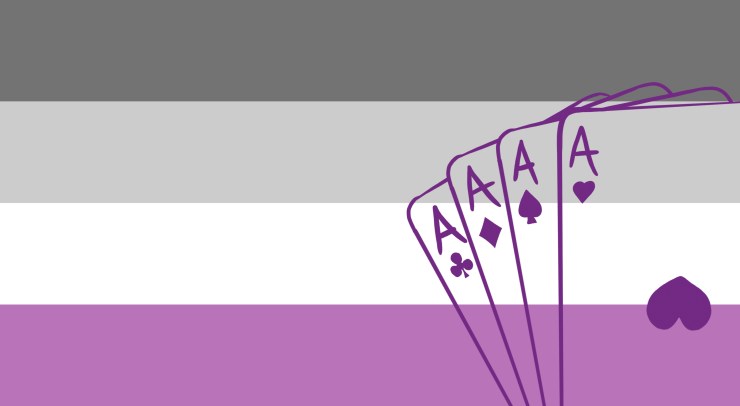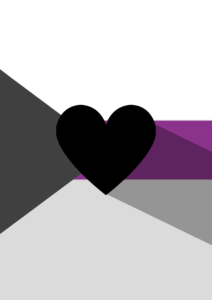
In the words of Maya Angelou, “We all should know that Diversity makes for a rich tapestry.” While this quote was not aimed explicitly at the LGBT+ community, it is nevertheless, of utmost relevance. The LGBT community, one of the most inclusive communities, boasts an excellent diversity, more than most imagine. To many people, the LGBT+ community ends with the T – the plus goes overlooked. This plus is what represents a plethora of identities and sexualities, that go unacknowledged, for the most part.
The spectrum is a representational model that aims to debunk the viewpoint that sexes, genders, identities, and sexual and romantic orientations exist only as opposites. There are separate spectra for each identity form and orientation, although these are usually grouped under a general umbrella spectrum, and an individual’s position on a particular spectrum is not indicative of their positions on the other spectra. This results in a 3D form of gender, orientation, and sex, as opposed to the linear form we conventionally visualize. Imagining this can be tricky for some, especially, if they’ve never thought of identities as non – absolute before. It makes it far easier to comprehend the vastness of the spectrum when you compare it to a physical human characteristic, all of which can naturally be expressed as a spectrum (such as hair color – even if your hair is brown, there are different shades of brown that it can be). This model gained traction during the early 70s, with the rise in feminism and pro – LGBT activism.
An important thing that should be understood prior to any conversation regarding spectra, is the difference between sex and gender. Sex is a biological term, relating to physiologic characteristics of the reproductive tract, right from chromosomes, all the way up to sex hormones. Gender is a social construct of identities, roles, and responsibilities depending on one’s medically assigned sex, which varies from person to person, and culture to culture. Another pair of terms that are confused with each other are gender and orientation (sexual / romantic). Gender is an intrapersonal aspect of oneself – how one views themselves – and orientation is an interpersonal aspect – who we are attracted to, physically, emotionally, or romantically.
The most well-known sects of the community include:
- Lesbians: women who form enduring relationships (physical, romantic, or emotional) with other women.
- Gay: this is an adjective used to describe same-sex relationships (physical, emotional, romantic). In modern times, the word is being used to describe male relationships, with women preferring the term lesbians.
- Bisexual: these are individuals who are physically, romantically, and/or emotionally attracted to both men and women.
- Transgender: an individual whose gender identity/ expression does not conform to the gender assigned to them at birth.
Other lesser-known niches of the community include:
- Intersex: this is a term used to describe an individual born with reproductive variations (anatomical/ physiological) who do not fit the typical definitions of sexes. For a very long time, this was confused with the term Transgender people may identify differently from the assigned gender and sex at birth, but the assigned gender usually tends to conform to the binary view of biological sex. The term intersex should also not be confused with transsexual, which is a historical term used to denote transgender people, and is now considered to be derogatory by most of the transgender community.
- Pansexual: these are individuals who feel physical, romantic, and/ or emotional attraction to people, irrespective of the other’s sex and gender identity. Some of these individuals may refer to themselves as gender – blind.
- Demisexual: they are individuals who feel physical attraction for people with whom they have already formed an emotional connection. Demisexuality is sometimes considered to be an aspect of gray – asexuality.
- Gray – asexuality: these individuals exist in the part of the spectrum between asexuality and allosexuality. This means that they feel sexual attraction towards others only occasionally. They possess their orientation and identity.
- Non – binary gender: this term is used to describe individuals whose gender identity is neither exclusively male nor female or individuals whose gender identities are beyond the binary conformation. It serves as an umbrella term.
- Genderfluid: these are people who do not conform to single fixed gender identity. They prefer to stay flexible about their gender and may identify with several genders over a period of time, or at the same time.
- Agender: individuals with no gender identity or neutral gender identity. Other terms used include gender-neutral, genderless, and neutrois.
- Bigender: individuals with two gender identities that they may express at the same time or at different times.
- Othergender: individuals who have gender identities that do not conform to binary gender identities.
- Questioning: this term is used to describe individuals who are exploring the extent of their sexual orientation and gender identity. Another term to explain this is
- Asexual: these are individuals who do not experience any kind of physical attraction towards anyone.
- Aromantic: these are individuals who cannot form romantic relationships with others.
- Biromantic: these are individuals who form romantic connections with both men and women
- Panromantic: these are individuals who form romantic connections with anyone, irrespective of sex, and gender identity.
Asexuality is, in no way, connected to romantic feelings. Asexual individuals are capable of forming emotional and romantic relations with other people and can have a distinct romantic orientation and identity. Aromantic individuals can be physically attracted to others and can possess their own, distinct sexual orientations. They are capable of forming deep connections with others, just not in a romantic capacity.
Panromantic, pansexual, biromantic, omnisexual and other orientations fall under the umbrella category of bisexuality.
There have been several controversies over the years regarding the representation of the community in the public eye. For several years, there has been confusion as to whether the categories, ‘curious’ and ‘ally’ should be included in the community spectrum. Allies are heterosexual people who believe in and support the LGBT community. Some believe that allies too, experience some stigma for their beliefs and should, therefore, be included in the acronym. However, many believe that although they are supportive, they cannot be included as a member of the community, for the reason that they do not belong to the minority group. Some believe that individuals who are exploring their orientations and boundaries should not be a part as they are merely experimenting, and have not yet confirmed their so-called ‘spot’ in the minority. This viewpoint is opposed by many in the community, who believe that inclusivity is the main priority.
Some sects of the community often feel deprived of representation, hidden behind the plus sign. However, this outlook has also come to change over time, with members of the community holding programs for support and awareness, with the notion that they need not wait for others to validate them.
Written by Maha Padala for MTTN
Edited by Andrea Xavier Gonsalves for MTTN
Featured image by Christina Wang
Artwork by Shashank Tomar

Leave a Reply
You must be logged in to post a comment.